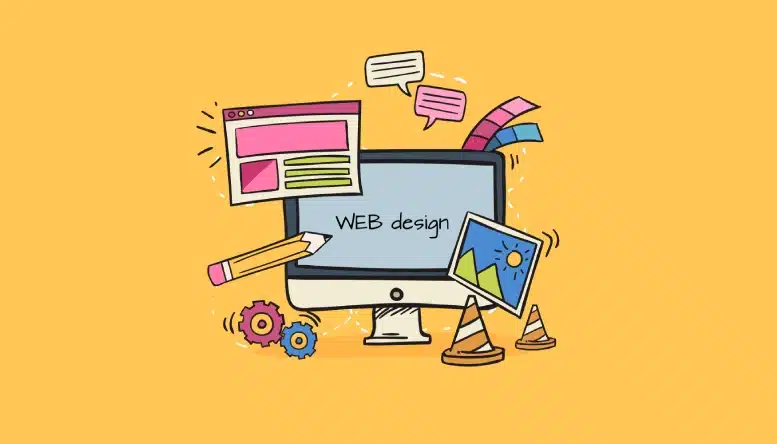Boost Your Service With Responsive and Easy To Use Internet Style
In a period where digital interactions dictate customer actions, the value of receptive and user-friendly internet layout can not be overemphasized. A well-structured web site not only accommodates various gadgets but likewise boosts the overall customer experience, cultivating higher engagement.
Importance of Responsive Style
In today's electronic landscape, a significant bulk of internet traffic stems from smart phones, underscoring the important value of receptive style. As customers significantly accessibility web sites through mobile phones and tablets, companies must guarantee that their online visibility is enhanced for numerous screen dimensions and resolutions. las vegas web design. Responsive layout not only enhances customer experience however likewise plays a vital duty in seo (SEARCH ENGINE OPTIMIZATION), as internet search engine focus on mobile-friendly sites

Along with enhancing customer fulfillment, receptive design can give an affordable advantage. In a market where digital interactions are critical, businesses that focus on receptive website design placement themselves as forward-thinking, boosting their brand credibility and inevitably driving conversions.

Key Components of User-Friendly Design
Simpleness is vital; a tidy, clean format permits users to browse easily. Intuitive navigation is one more vital aspect, making it possible for users to discover details quickly without confusion.
Furthermore, understandable typography plays a substantial role in user experience. Choosing understandable fonts and suitable sizes ensures that individuals can quickly eat material without stressing their eyes. Reliable use shade and comparison not only enhances aesthetic appeals yet additionally boosts readability and access for customers with aesthetic disabilities.
Additionally, integrating interactive aspects such as buttons and links that are clearly specified and appropriately spaced urges user interaction. Comments systems, like hover results or verification messages, additionally improve the interaction by giving individuals with confidence that their activities have been acknowledged.
Last but not least, maximizing load times can considerably influence user satisfaction. A fast-loading site reduces bounce rates and keeps customers involved, ultimately cultivating a more favorable perception of the brand. By concentrating on these elements, companies can produce an easy to use layout that drives success.
Advantages of Mobile Optimization
Mobile optimization is important for modern internet sites, as individuals progressively depend on their smartphones and tablet computers for browsing. Individuals can easily navigate a mobile-optimized website, which boosts their total experience and raises the chance of involvement.
In addition, mobile optimization can cause greater online search engine rankings. Internet search engine like Google focus on mobile-friendly internet sites in their formulas, implying that businesses with enhanced sites are a lot more likely to appear in search outcomes. This visibility can drive more organic traffic and potential customers to business.
Furthermore, mobile optimization minimizes bounce prices. When customers run into a web site that is challenging to browse or slow to fill on their smart phones, they are likely to leave and seek alternatives. By providing a smooth experience, services can keep individuals and transform sees right into sales.
Enhancing Individual Experience
A well-optimized internet site not only deals with mobile customers but additionally significantly enhances overall user experience. By integrating receptive design concepts, services can make sure that their sites come throughout different devices and display dimensions, creating a seamless browsing experience. This flexibility fosters user interaction, as visitors are much less likely to run into frustrating navigation concerns or altered content.
Additionally, an user-friendly interface streamlines interactions, allowing customers to visit our website situate info or complete purchases with simplicity. Elements such as instinctive menus, clear calls-to-action, and aesthetically enticing designs contribute to a favorable experience, motivating customers to invest even more time on the site. Quick loading times are an additional vital element, as sluggish internet sites can cause high bounce prices and disgruntled customers.
On top of that, improving individual experience entails taking into consideration the demands of varied audiences. Implementing features such as alt text for images and ensuring high contrast in between message and history can make internet sites a lot more available to individuals with impairments. Eventually, focusing on user experience not just satisfies existing customers yet also brings in brand-new ones, developing a solid foundation for business growth in an increasingly electronic landscape.
Measuring Success and ROI
Gauging success and return on investment (ROI) in receptive website design web design las vegas is essential for recognizing its impact on company efficiency (las vegas web design). To effectively assess the success of a responsive website design effort, organizations should establish key performance indicators (KPIs) that line up with their purposes. Typical KPIs consist of conversion rates, bounce rates, individual involvement metrics, and typical session durations
Tracking these metrics with analytics devices enables organizations to evaluate just how well the receptive layout satisfies individual requirements throughout tools. A high conversion rate, for instance, shows that individuals are not just checking out the site but are also taking desired activities, such as buying or signing up for an e-newsletter.
Companies ought to additionally these details consider qualitative comments from customers, as this can offer insights into user satisfaction and locations for enhancement. By continually gauging success and ROI, companies can make informed choices to enhance their internet visibility, guaranteeing that their responsive design techniques yield ideal outcomes and foster lasting growth.
Verdict
